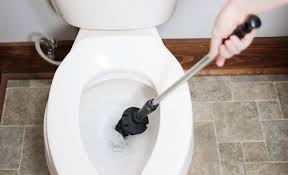Dealing with a toilet that doesn’t drain completely can be frustrating and unsanitary. Whether it’s a slow drain or water that refuses to go down, this common plumbing issue can disrupt your daily routine. In this article, we’ll explore the reasons behind a toilet not draining completely, provide step-by-step solutions, and share tips to prevent future problems.Common Causes of a Toilet Not Draining Completely
- Clogged Drain Pipe: The most frequent culprit is a blockage in the drain pipe. Items like excessive toilet paper, sanitary products, or foreign objects can obstruct the flow.
- Low Water Level: If the toilet tank isn’t filling properly, there may not be enough water to create a strong flush, leading to incomplete drainage.
- Vent Pipe Issues: Plumbing systems rely on vent pipes to maintain air pressure. A blocked or damaged vent pipe can hinder drainage.
- Mineral Buildup: Hard water can cause mineral deposits to accumulate in the pipes, reducing their diameter and slowing drainage.
- Improper Installation: If the toilet or its pipes were installed incorrectly, it may not drain efficiently.
How to Fix a Toilet Not Draining Completely
- Plunge the Toilet: Use a flange plunger to create suction and dislodge the clog. Ensure a tight seal around the drain hole and push firmly several times.
- Use a Toilet Auger: If plunging doesn’t work, a toilet auger (or snake) can reach deeper into the pipes to break up or retrieve the blockage.
- Check the Water Level: Adjust the float valve in the tank to ensure it fills to the recommended level (usually marked inside the tank).
- Inspect the Vent Pipe: Locate the vent pipe on your roof and check for obstructions like leaves or debris. Clear any blockages carefully.
- Clean Mineral Deposits: Pour a mixture of vinegar and baking soda into the bowl and let it sit overnight to dissolve buildup. Flush thoroughly in the morning.
Preventing Future Drainage Issues
- Avoid flushing non-degradable items like wipes, cotton balls, or hygiene products.
- Use less toilet paper or flush multiple times if necessary.
- Install a water softener if hard water is a recurring problem.
- Schedule annual plumbing inspections to catch issues early.
- Educate household members about proper toilet use to prevent clogs.
When to Call a ProfessionalIf you’ve tried the above steps and your toilet still isn’t draining completely, it may be time to call a plumber. Persistent issues could indicate deeper problems like tree root intrusion, collapsed pipes, or sewer line damage. A licensed professional can diagnose and resolve these complex issues safely.By understanding the causes of a toilet not draining completely and taking proactive measures, you can maintain a functional and hygienic bathroom. Remember, regular maintenance and mindful usage are key to preventing most drainage problems.

